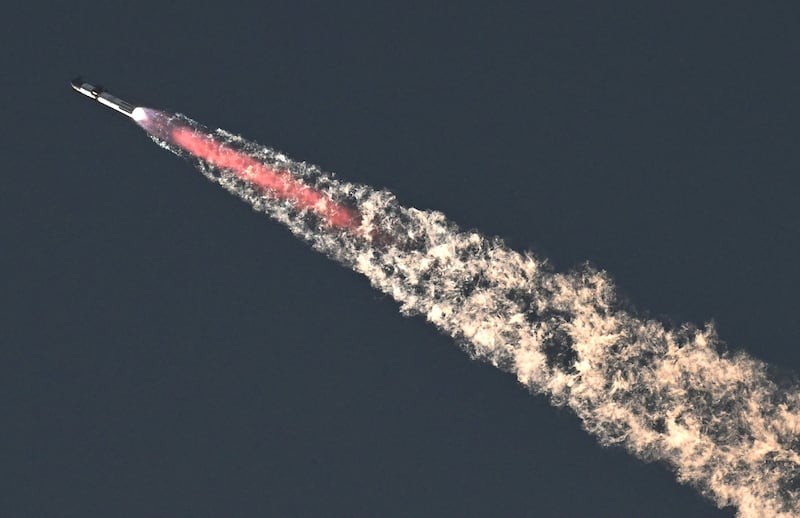SpaceX’s uncrewed spacecraft Starship, developed to carry astronauts to the moon and beyond, reached space for the first time on Saturday but was presumed to have failed minutes later.
It was Starship’s second test after its first attempt to reach space ended in an explosion earlier this year.
The two-stage rocket ship blasted off from the Elon Musk-owned company’s Starbase launch site near Boca Chica in Texas, east of Brownsville, at 1pm Irish time, on a planned 90-minute uncrewed flight into space.
If successful, the rocket would have ended up landing in the Pacific ocean near Hawaii. The company hopes the rocket can eventually manage a trip around the Earth, which could take an hour and a half.
Russia regains influence in its ‘near abroad’ as West wraps itself in red lines
‘They just want us to work and have babies.’ Exasperation in China as Halloween falls foul of authorities
Tories shout ‘we told you so’ after Rachel Reeves’ tax-and-spend Labour budget
How Trump allies could challenge US presidential election result
But about two and a half minutes into the flight, the two stages of the spacecraft broke apart. SpaceX shortly announced that it could not find a signal from the second stage, which it declared “lost”.
The company believes the rocket’s self-destruction mechanism was set off after it lost the signal.
SpaceX’s second flight is an improvement compared to its first test launch in April, when both stages ultimately exploded four minutes into its flight. The spacecraft’s first stage, nicknamed “Super Heavy” for its 33 engines, had failed, causing both stages to explode.
This time, Super Heavy’s 33 engines succeeded in lifting itself and the second stage, the rocket system Starship, into space. Starship successfully separated from Super Heavy as planned, but the rocket’s automatic termination system activated, causing an explosion.
“What we do believe right now is that the automated flight termination system on second stage appears to have triggered very late in the burn as we were headed downrange over the Gulf of Mexico,” SpaceX engineer John Insprucker said in a company broadcast.
Insprucker did not say what may have activated the termination system.
On X, the social media platform also owned by Musk and formerly known as Twitter, SpaceX confirmed that it experienced an explosion, something the company refers to as “a rapid unscheduled disassembly”.
“With a test like this, success comes from what we learn, and today’s test will help us improve Starship’s reliability as SpaceX seeks to make life multi-planetary,” the company said.

The Federal Aviation Administration grounded the rocket pending a safety and environmental review but cleared the launch this week. The company had come under criticism after its first launch for the amount of debris it showered over Texas after its first explosion.
The company has a $4bn contract with the US space agency Nasa, which hopes the partnership will result in the first successful flight to the moon in more than five decades. Musk has broader aspirations for the company’s rockets, saying that he wants to eventually send humans to Mars on reusable rockets.
Musk has also floated the idea of using a rocket for commercial travel, such as offering an hour-long flight from London to Tokyo.
Musk has maintained that tests, even if resulting in explosions, are important for the company to improve its spacecraft. An official for Nasa recently suggested that the company will need the number of launches to be “in the high teens” before the craft can be used for the lunar landing mission. - Guardian




